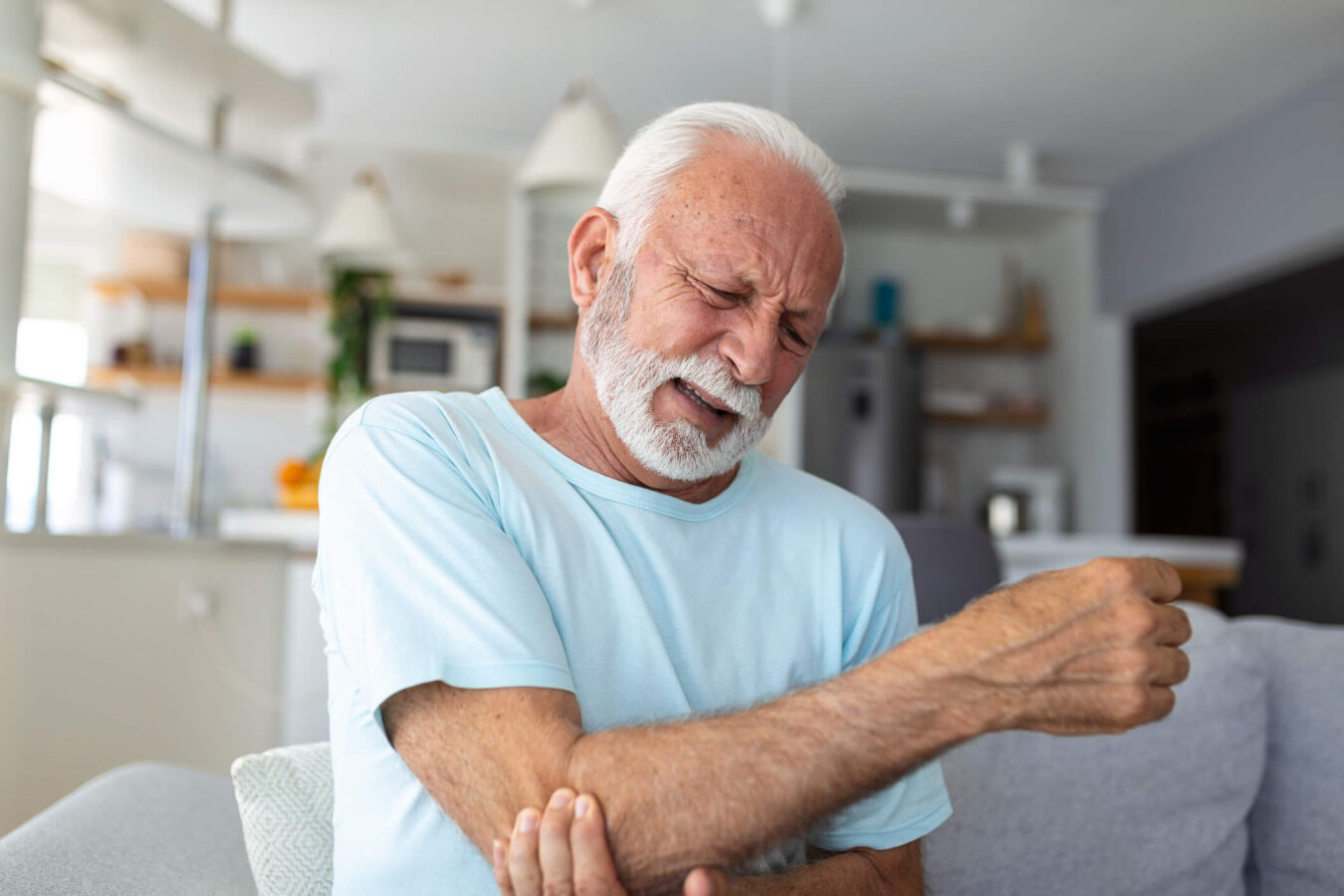
Medically reviewed by Misty Seidenburg
Elbow injuries are some of the most common conditions we treat as physical therapists. Whether your elbow pain is the result of a recent injury or it’s related to a chronic condition, we can help. Physical therapy for elbow pain reduces pain and improves strength and function so you can gradually resume your everyday activities.
Here is an overview of the process to prepare you for physical therapy for elbow pain.
Most elbow pain has three main causes: injury, overuse, or disease.
Sports and activities that require repetitive wrist, hand, and arm movements place undue stress on the joint’s connective structures without giving them enough time to heal. Tennis elbow and golfer’s elbow are two common examples of elbow overuse injuries.
Blunt force trauma to the arm, like in a fall, can fracture the bones and overstretch or tear the elbow’s soft tissues, causing pain, dislocation, stiffness, and function and range of motion problems. Some systemic conditions like arthritis and gout can also cause elbow pain as well.
Elbow pain can be described as sharp, aching, stinging, burning, or throbbing. It may be localized near the joint or radiate throughout the arm in either direction. Some patients have continual pain, while others only experience it during certain movements. Pain in and around the elbow joint is sometimes accompanied by stiffness, a weak grip, and difficulty bending or rotating the arm.
In many cases, elbow pain is nothing more than a minor ache or pain. Yet because pain can be a symptom of a serious underlying injury, it’s always best to see your healthcare provider if pain does not improve after a few days of rest, elevation, and compression.
An obvious deformity or pain accompanied by fever and/or chills are signs to seek urgent medical attention. Sprains, strains, and fractures that go untreated can result in secondary complications or chronic issues.
Elbow pain therapy begins with an initial health history and questions about your injury and symptoms. Next, your physical therapist assesses your elbow, arm, neck, and other areas of the body that may be contributing to your pain.
Assessment of the elbow includes testing the muscles for any weakness that may be contributing to your condition as well as looking at joint mobility. We’ll ask you to tense, relax, and stretch any sore muscles and we test for any areas of muscle weakness that may be causing your condition
We use all of this information to create your treatment plan for elbow pain. Once we determine you are ready to gradually introduce movement, the work can begin.
Physical therapy for elbow pain may include:
Homework is a big part of physical therapy for elbow pain too. We send you home with simple but effective stretches and exercises to reinforce the work we do in the clinic and speed up your recovery. We continually evaluate your progress and refine your treatment plan as needed to meet your physical therapy goals.
Are you tired of living with elbow pain? Find a physical therapy clinic near you to take the first step toward relief.

